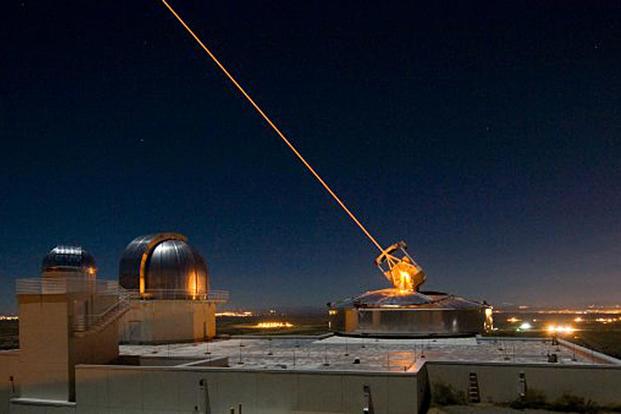The nation needs directed-energy weapons -- lasers, particle beams, microwaves -- to take out enemy ballistic missiles on launch, Air Force Gen. John Hyten said Wednesday.
"Drop it back on their heads" right after it leaves the pad, Hyten, commander of U.S. Strategic Command, said at an all-day forum on Army missile defense sponsored by the Association of the U.S. Army.
"The day you can actually shoot a missile down over somebody's head and have that thing drop back on their heads -- that'll be a good day, because as soon as you drop it back on their head, that's the last one they're going to launch, especially if there's something nasty on top of it," he said.
"I think directed energy brings that to bear," Hyten said, although such weapons do not yet exist in the U.S. arsenal.
"Directed energy is an interesting challenge," he said, but "I think directed energy has a huge potential on the missile defense side.
"We're getting close" on directed energy weapons development, Hyten said. "We're getting close to where that technology is going to be and where it's going to work, and I think it's going to change the defensive structure a lot. It's going to move the opportunity to intercept further to the left."
Currently, the THAAD (Terminal High Altitude Area Defense) and Patriot missile defense systems provide intercept capabilities in the terminal phase of a missile attack, but directed energy would enhance deterrence by threatening intercept at launch, he said.
Hyten's comments on directed energy weapons came in a question-and-answer session following his keynote address to the conference in which he said that U.S. strategic deterrence and missile defense had to be tailored to the adversary.
"It's not one size fits all" in responding to the varying threats from Russia, China and North Korea, he said, "and we keep, as a nation, trying to make it one size fits all and it doesn't work that way." Hyten said.
"We have to look at each adversary differently and separately and then look at the impact of what we do as a whole," Hyten said.
He said that Russia posed the only current existential threat while China was advancing to that point, but North Korea posed the most immediate threat.
"I think Korea is the most uncertain threat and the most dangerous, near-term threat because we are not certain how that is going to play out this year," Hyten said. "There seems to be good things going on on the peninsula right now, but we will have to wait and see now that the Olympics are over how that goes."
The U.S. and South Korea agreed to postpone scheduled joint military exercises opposed by North Korea during the Winter Olympics and during the following Paralympics that will end in mid-March but Defense Secretary Jim Mattis has said that the exercises will go ahead once the Paralympics are concluded.
"The Korean problem is different than the China problem is different than the Russia problem. Everything we do with respect to Korea impacts China. Everything we do with China impacts Russia. Everything we do with Russia impacts everybody else," Hyten said.
"I wish I could look at them as friends and partners, but when you have weapons that are clearly built for you, as a military officer and as a combatant commander, I don't get a choice," he said. "I have to figure out how to counter those threats and I look at them as threats."
The mounting threats strain existing missile defenses and highlight deficiencies, Hyten said. "We still have exploitable holes" in the current missile defense systems whose backbone is the ground-based, hit-to-kill interceptors in California and at Fort Greely, Alaska, he said.
Hyten said his highest priority was to develop space-based sensors to augment the ground-based and ship-based radars in the current system. "There's not enough ships, there's not enough islands in the Pacific" to provide the missile defense early warning system that are necessary, Hyten said.
-- Richard Sisk can be reached at Richard.Sisk@Military.com.










